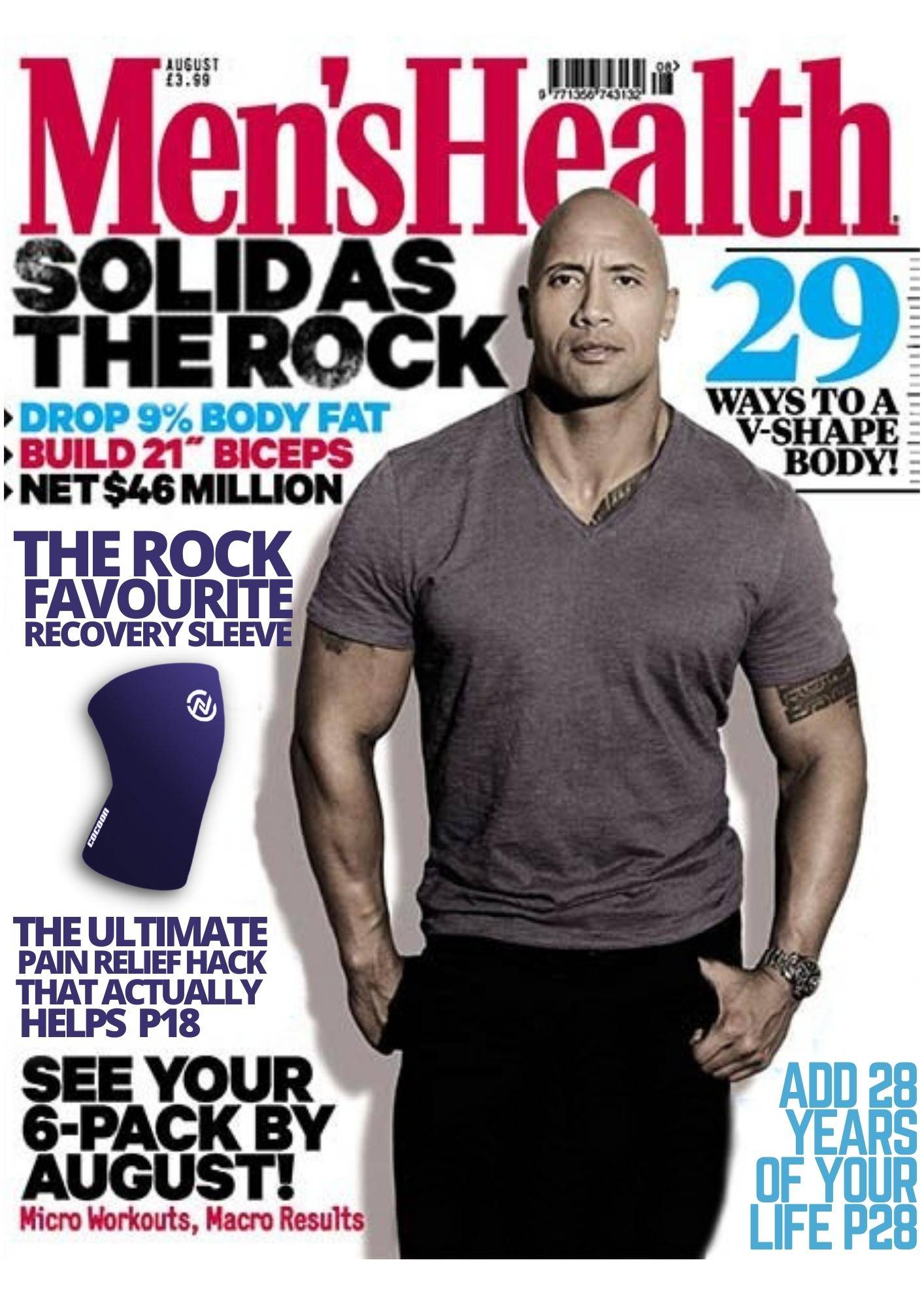

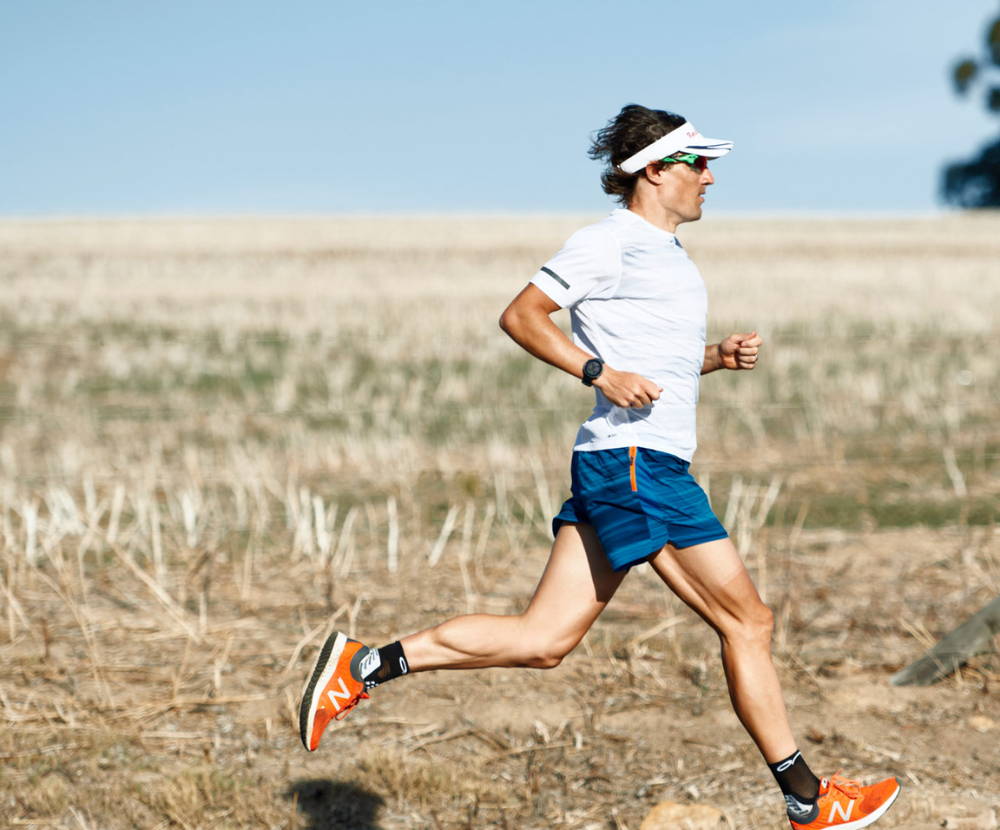
Running Strong Forever
5 Runners Share Their Secrets to Running Stronger in Their 40s, 50s, 60s and Beyond

Running Strong Forever
5 Runners Share Their Secrets to Running Stronger in Their 40s, 50s, 60s and Beyond
BY: HEALTH INSIDER EDITORS JULY 8, 2021
BY: HEALTH INSIDER EDITORS JULY 8, 2021
Maintaining your fitness after your 30s requires dedication. The challenges your body faces as you age, and the roles and responsibilities you assume, affect where, when, and how far you can run. Five experienced runners shared their tips for staying fast (and in some cases, becoming faster than ever!) as they approach their 40s, 50s, and 60s.
Utilize these strategies when running. Plus, how fast you can recover after running long distances and how to develop a healthy recovery for each age bracket.
Maintaining your fitness after your 30s requires dedication. The challenges your body faces as you age, and the roles and responsibilities you assume, affect where, when, and how far you can run. Five experienced runners shared their tips for staying fast (and in some cases, becoming faster than ever!) as they approach their 40s, 50s, and 60s.
Utilize these strategies when running. Plus, how fast you can recover after running long distances and how to develop a healthy recovery for each age bracket.
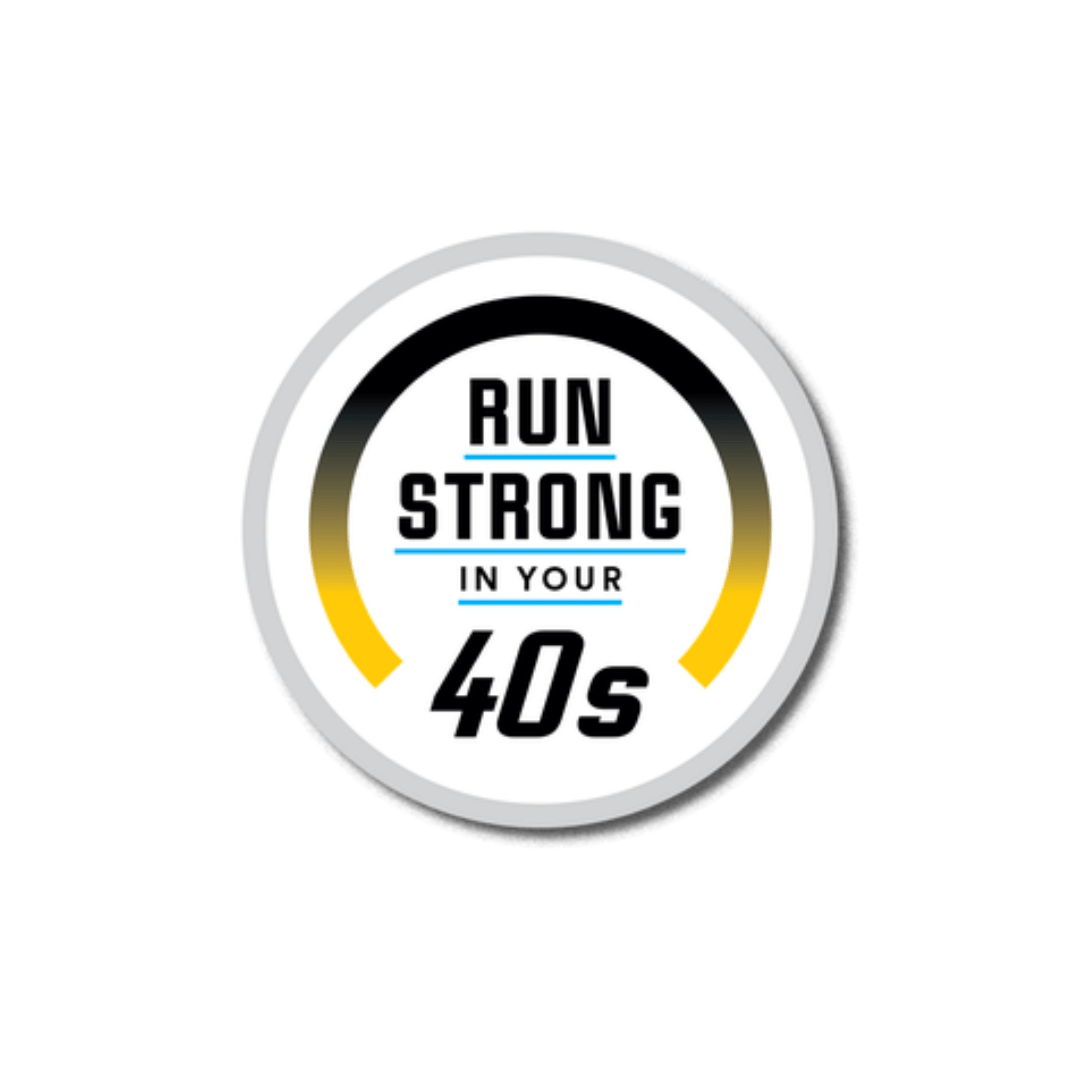

Develop Recovery Habits
Khadivis Robinson, 44, Columbus, Ohio
Olympian in the 800m twice (2004, 2012)
Develop Recovery Habits
Khadivis Robinson, 44, Columbus, Ohio
Olympian in the 800m twice (2004, 2012)
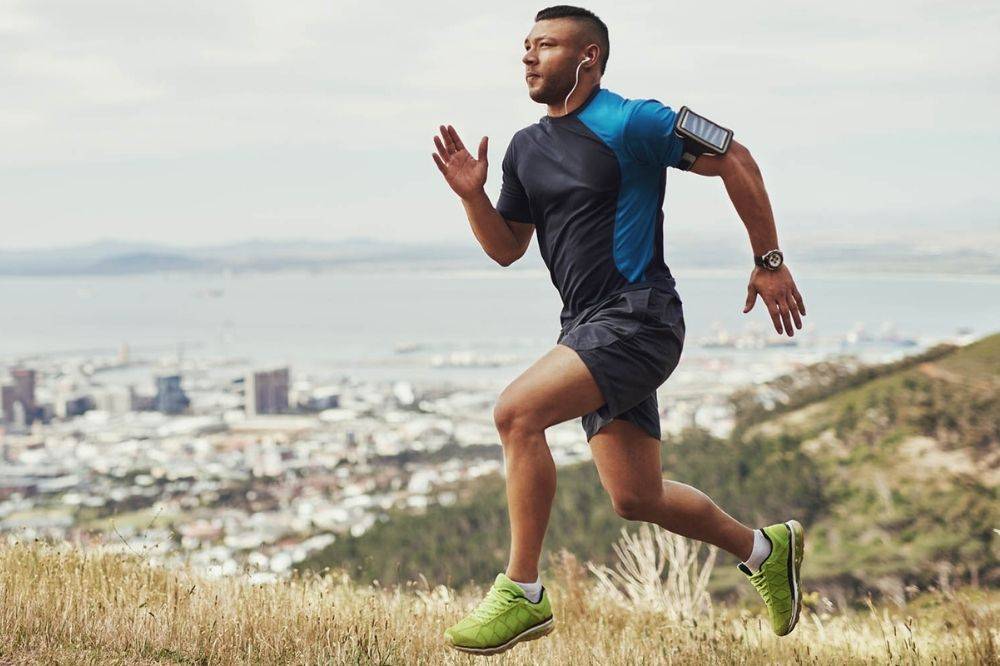

Coach Robinson is the head coach of Ohio State University's distance track and cross country program.
Coach Robinson is the head coach of Ohio State University's distance track and cross country program.
You can compete for a long time if you take exemplary care of your body. In my last Olympics, I was 36 years old. As you age, you have to adapt. You're still developing as a young athlete. Your goal is to become stronger and faster. If, however, you have built the athleticism you need for your sport [and reached your limit], you don't need to train as hard anymore, because you hit a diminishing rate of return. Injuries are caused by trying too hard to get better and not being able to recover.
As long as I don't go too hard two days in a row, I run the risk of getting injured. Every high-intensity day is followed by two low-intensity days, even if I feel great. On low-intensity days, I work at 70 percent. After a hard 10-mile tempo run, I will run 7 miles the next day, or 70 percent of my previous pace.
I always ice my knees after training, and warm my stiff joints with my favorite non-slip hot and cold compression sleeve before a workout.
You can compete for a long time if you take exemplary care of your body. In my last Olympics, I was 36 years old. As you age, you have to adapt. You're still developing as a young athlete. Your goal is to become stronger and faster. If, however, you have built the athleticism you need for your sport [and reached your limit], you don't need to train as hard anymore, because you hit a diminishing rate of return. Injuries are caused by trying too hard to get better and not being able to recover.
As long as I don't go too hard two days in a row, I run the risk of getting injured. Every high-intensity day is followed by two low-intensity days, even if I feel great. On low-intensity days, I work at 70 percent. After a hard 10-mile tempo run, I will run 7 miles the next day, or 70 percent of my previous pace.
I always ice my knees after training, and warm my stiff joints with my favorite non-slip hot and cold compression sleeve before a workout.
Aim For Your Peak
Natalie Mitchell, 48, Pacific Palisades, CA
Finished the marathon at 46 in 3:05
Aim For Your Peak
Natalie Mitchell, 48, Pacific Palisades, California
Completed the marathon in 3:05 at the age of 46
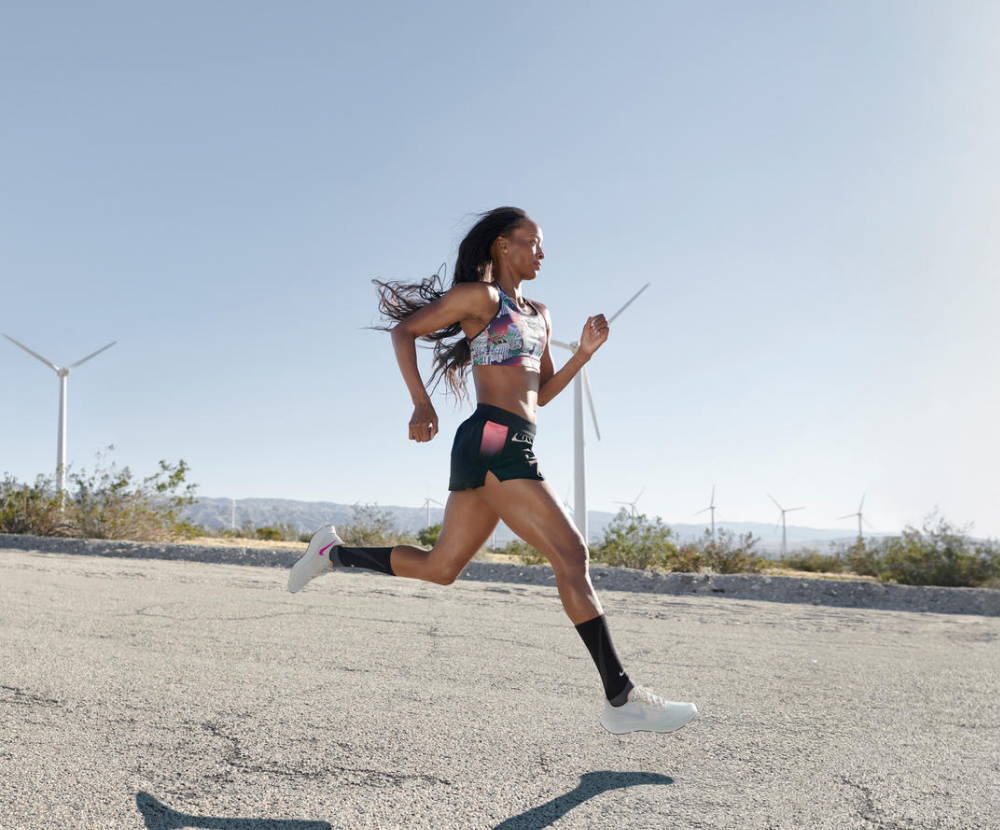

Despite my age, Mitchell always aims for the same goal: to take care of her body as she approaches the starting line.
Despite my age, Mitchell always aims for the same goal: to take care of her body as she approaches the starting line.
Although I've been running almost my entire life, I didn't start training seriously until I was in my 40's. At 42, I began working with a running coach for the first time since my college days. In 2019, I set my marathon PR at the Mesa-Phoenix Marathon when I was 46 years old. I have slowed my recovery rate down as I approach my late 40s. Middle age tells my body to protect my knees, so in order to combat this, I've been more consistent and diligent when it comes to cold therapy for post workout recovery. In addition to icing for 15 minutes after a challenging workout, I use heat therapy to warm up my joints every morning, and I wear compression sleeves to improve blood circulation during my sleep. My favorite recovery tools are the foam roller, massage ball and the hot and cold compression sleeves. My body needs to be listened to and given what it requires.
Many women have given up on themselves because they are approaching 40. Can we think of turning 40 as a new beginning? Despite my age, I don't consider myself an "older runner." I haven't reached my potential in this sport, and that motivates me to keep training smartly.
Although I've been running almost my entire life, I didn't start training seriously until I was in my 40's. At 42, I began working with a running coach for the first time since my college days. In 2019, I set my marathon PR at the Mesa-Phoenix Marathon when I was 46 years old. I have slowed my recovery rate down as I approach my late 40s. Middle age tells my body to protect my knees, so in order to combat this, I've been more consistent and diligent when it comes to cold therapy for post workout recovery. In addition to icing for 15 minutes after a challenging workout, I use heat therapy to warm up my joints every morning, and I wear compression sleeves to improve blood circulation during my sleep. My favorite recovery tools are the foam roller, massage ball and the hot and cold compression sleeves.My body needs to be listened to and given what it requires.
Many women have given up on themselves because they are approaching 40. Can we think of turning 40 as a new beginning? Despite my age, I don't consider myself an "older runner." I haven't reached my potential in this sport, and that motivates me to keep training smartly.
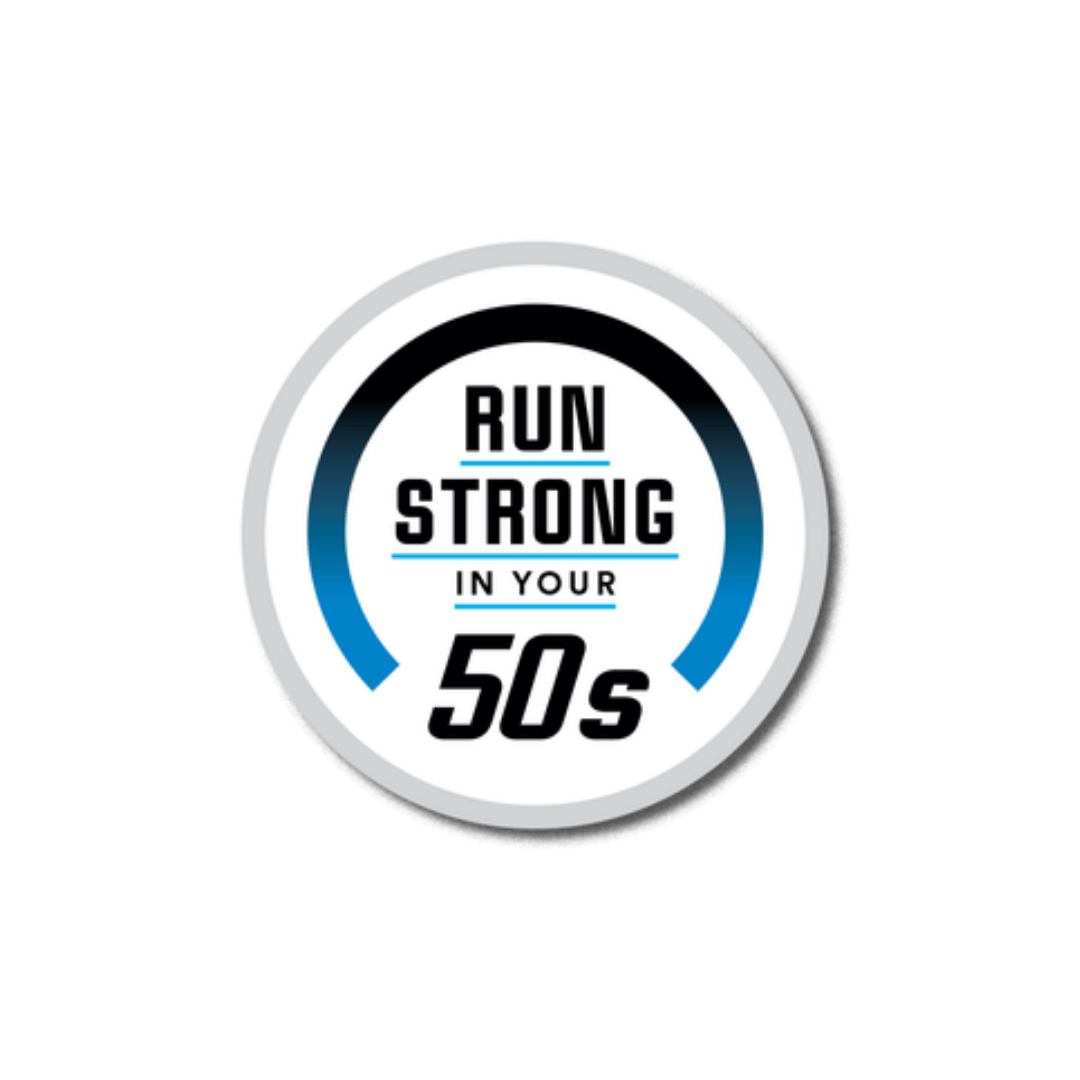

Discover More to Love Every Mile
Rich Roll, 54, Calabasas, California
Runner up at the 2017 Ötillö Swimrun World
Discover More to Love Every Mile
Rich Roll, 54, Calabasas, California
Runner up at the 2017 Ötillö Swimrun World
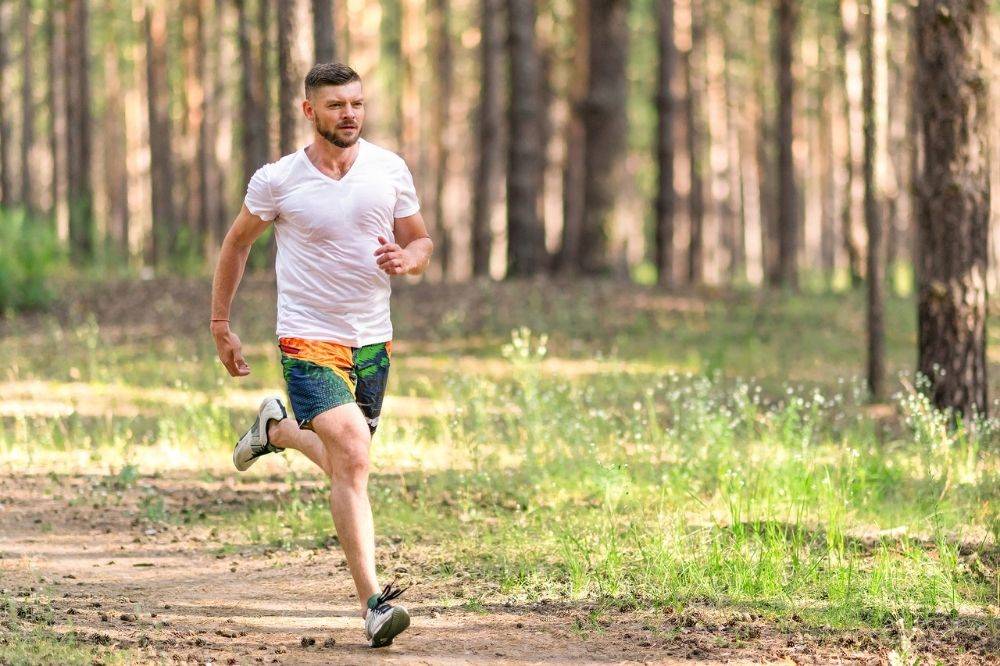

For Roll, a podcast host, author, and ultramarathoner, finding joy in running begins with meditation. It is important to learn to listen to the body as well as the mind.
For Roll, a podcast host, author, and ultramarathoner, finding joy in running begins with meditation. It is important to learn to listen to the body as well as the mind.
My relationship with running was very performance-oriented when I was in my 40s. Although I don't feel like I have anything to prove in my 50s, transitioning from being wedded to metrics to just falling in love with running is still difficult for me.
Due to my aging, I've had to pay more attention to running techniques such as keeping my shoulders upright and not heel striking-as well as recovery, icing, and taking frequent breaks to avoid sitting for hours at a time. I know of no other recovery modality that makes a greater difference to recover faster and improve performance than the Cocoon’s Knee Flex Pro. Because of this, my joints have become healthier and stronger.
I do strength training a lot more now than I ever used to. As a runner, I keep my form aligned through a strong middle section of my body. Simple exercises such as reverse planks and Swiss ball rollouts help me strengthen my core.
Do I feel well throughout the day? That is the most significant metric for me now. Am I fit? Do I enjoy running in nature and being one with my breath and heart rate? To me, running is an active form of mindfulness that engages my physical self and provides emotional, mental, and spiritual benefits. Being present and grateful in my life makes me a better person, parent, and parent.
My relationship with running was very performance-oriented when I was in my 40s. Although I don't feel like I have anything to prove in my 50s, transitioning from being wedded to metrics to just falling in love with running is still difficult for me.
Due to my aging, I've had to pay more attention to running techniques such as keeping my shoulders upright and not heel striking-as well as recovery, icing, and taking frequent breaks to avoid sitting for hours at a time. I know of no other recovery modality that makes a greater difference to recover faster and improve performance than the Cocoon’s Knee Flex Pro. Because of this, my joints have become healthier and stronger.
I do strength training a lot more now than I ever used to. As a runner, I keep my form aligned through a strong middle section of my body. Simple exercises such as reverse planks and Swiss ball rollouts help me strengthen my core.
Do I feel well throughout the day? That is the most significant metric for me now. Am I fit? Do I enjoy running in nature and being one with my breath and heart rate? To me, running is an active form of mindfulness that engages my physical self and provides emotional, mental, and spiritual benefits. Being present and grateful in my life makes me a better person, parent, and parent.
Mobilize and Add Power
Erin Carson, 54, Boulder, Colorado
2019 finisher of the IRONMAN 70.3 World
Mobilize and Add Power
Erin Carson, 54, Boulder, Colorado
2019 finisher of the IRONMAN 70.3 World
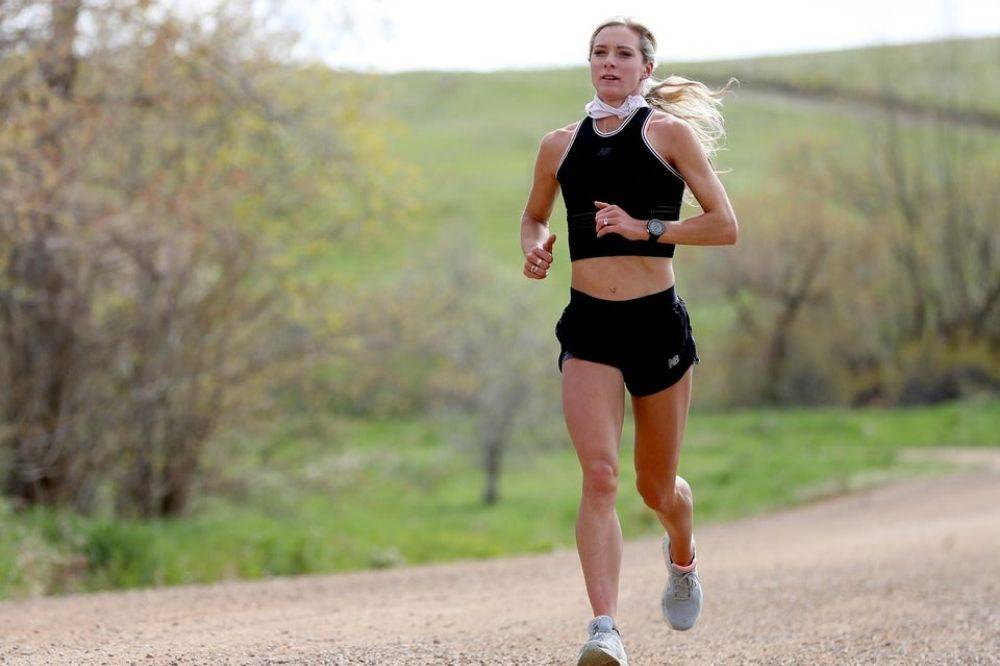

Runners 55 and older, your levels of human growth hormone (needed for tissue repair) are 33 percent lower than in runners 18 to 35. That's why Carson recommends getting good sleep to help you recover.
Runners 55 and older, your levels of human growth hormone (needed for tissue repair) are 33 percent lower than in runners 18 to 35. That's why Carson recommends getting good sleep to help you recover.
When I was in my 50s, I didn't need volume. Maintaining my speed, strength, and mobility requires interval work and strength sessions.
Instead of running on Sundays, I now run for at least an hour every 10 days or so. I also perform mobility exercises every day and after every run, which include miniband exercises, foam rolling, heat therapy. This is especially relevant to women my age who are prone to knee pain, as well as unsightly varicose veins that are caused by increased blood pressure in our legs. A runner in their 50s wants healthy joints, strong knees, and mobility to open their stride and drive their speed.
I plan to stay healthy and strong in order to outwit, outplay, and outlast my age group, to quote Survivor. If I put just as much focus on recovery as I do on training, I can maintain my speed in my 50s. Rest is when we repair, so I have been alternating between cold and hot therapy with the perfect post running recovery sleeve, that naturally helped me get stronger and healthier knees. As a senior triathlete who has knee problems, they have been very beneficial in letting stiff joints and aching knee parts recover faster without slowing me down.
When I was in my 50s, I didn't need volume. Maintaining my speed, strength, and mobility requires interval work and strength sessions.
Instead of running on Sundays, I now run for at least an hour every 10 days or so. I also perform mobility exercises every day and after every run, which include miniband exercises, foam rolling, heat therapy. This is especially relevant to women my age who are prone to knee pain, as well as unsightly varicose veins that are caused by increased blood pressure in our legs. A runner in their 50s wants healthy joints, strong knees, and mobility to open their stride and drive their speed.
I plan to stay healthy and strong in order to outwit, outplay, and outlast my age group, to quote Survivor. If I put just as much focus on recovery as I do on training, I can maintain my speed in my 50s. Rest is when we repair, so I have been alternating between cold and hot therapy with the perfect post running recovery sleeve, that naturally helped me get stronger and healthier knees. As a senior triathlete who has knee problems, they have been very beneficial in letting stiff joints and aching knee parts recover faster without slowing me down.
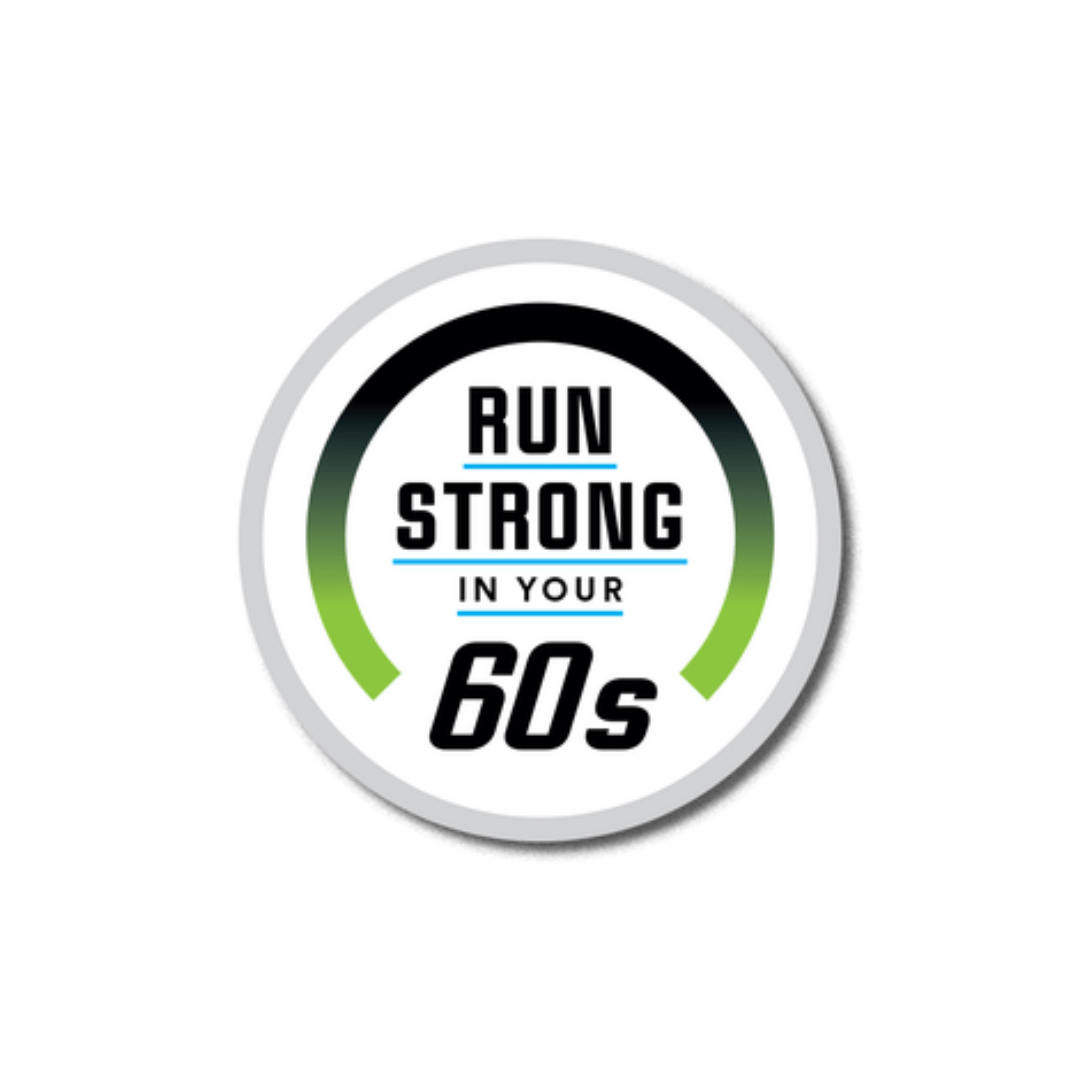

Experience the Adventure of Running
N. Ditz Mosbacher, 66, Woodside, California
1968 Olympic marathoner, 800m time of 3:08
Experience the Adventure of Running
Nancy Ditz Mosbacher, 66, Woodside, California
1968 Olympic marathoner, ran an 800m time of 3:08
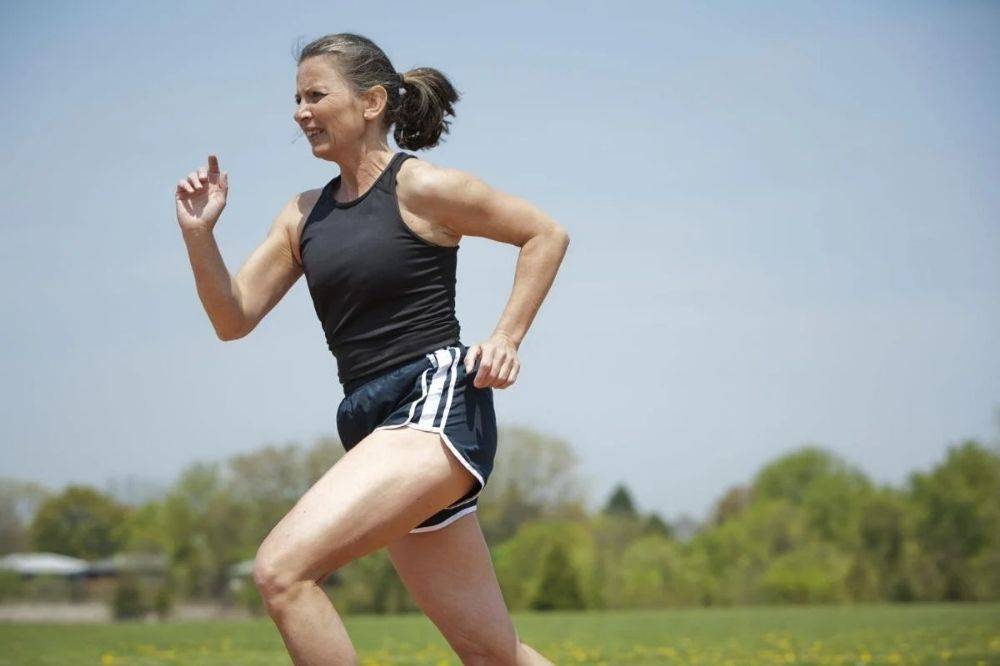

I finished in the lead pack at the Olympic Marathon trials in 1992, but my heart wasn't in it. I stopped running for 22 years. After being incredibly busy and happy with my family, I started running again when I turned 60 when I decided to run the 2016 Boston Marathon with my daughter. Then I realized how much I missed running.
I had been relatively healthy throughout my competitive career. This time, it was different. I’ve had sciatica, tight IT bands, and tore the meniscus in both knees. A lot of my injuries have come from weak hips. Therefore, now I spend at least 10 minutes every day using the Cocoon Knee Flex Pro.Every two weeks I visit the physical therapist. Since my return to running, it has become a social activity for me. I have trained with two different groups and formed deep friendships with them. To avoid having to wait for the faster people, I modify my workout when necessary. I will do 1000 meter repeats if they are doing 1200-meter repeats. I have enough rest to return to the starting line when they're ready, and also jumpstart my recovery when the sessions are over.
However, I train on trails most of the time. It's less intense and more adventurous. We walked the North Rim of the Grand Canyon together and camped along the way. The trails also allow me to stop thinking about time and pace as often as I would on the track or roads. I enjoy it. I have adjusted my attitude accordingly. Even though I want to win my age group and stay competitive (even against the men), I prioritize having fun.
I finished in the lead pack at the Olympic Marathon trials in 1992, but my heart wasn't in it. I stopped running for 22 years. After being incredibly busy and happy with my family, I started running again when I turned 60 when I decided to run the 2016 Boston Marathon with my daughter. Then I realized how much I missed running.
I had been relatively healthy throughout my competitive career. This time, it was different. I’ve had sciatica, tight IT bands, and tore the meniscus in both knees. A lot of my injuries have come from weak hips. Therefore, now I spend at least 10 minutes every day using the Cocoon Knee Flex Pro.Every two weeks I visit the physical therapist. Since my return to running, it has become a social activity for me. I have trained with two different groups and formed deep friendships with them. To avoid having to wait for the faster people, I modify my workout when necessary. I will do 1000 meter repeats if they are doing 1200-meter repeats. I have enough rest to return to the starting line when they're ready, and also jumpstart my recovery when the sessions are over.
However, I train on trails most of the time. It's less intense and more adventurous. We walked the North Rim of the Grand Canyon together and camped along the way. The trails also allow me to stop thinking about time and pace as often as I would on the track or roads. I enjoy it. I have adjusted my attitude accordingly. Even though I want to win my age group and stay competitive (even against the men), I prioritize having fun.
Runners Over 40 Must-Have Recovery Gear
→ Cocoon’s Knee Flex Pro Sleeve:A leak-proof hot and cold compression sleeve that will not fall off your leg while you are moving, providing the 360° calming warm comfort and soothing cooling relief that you deserve.
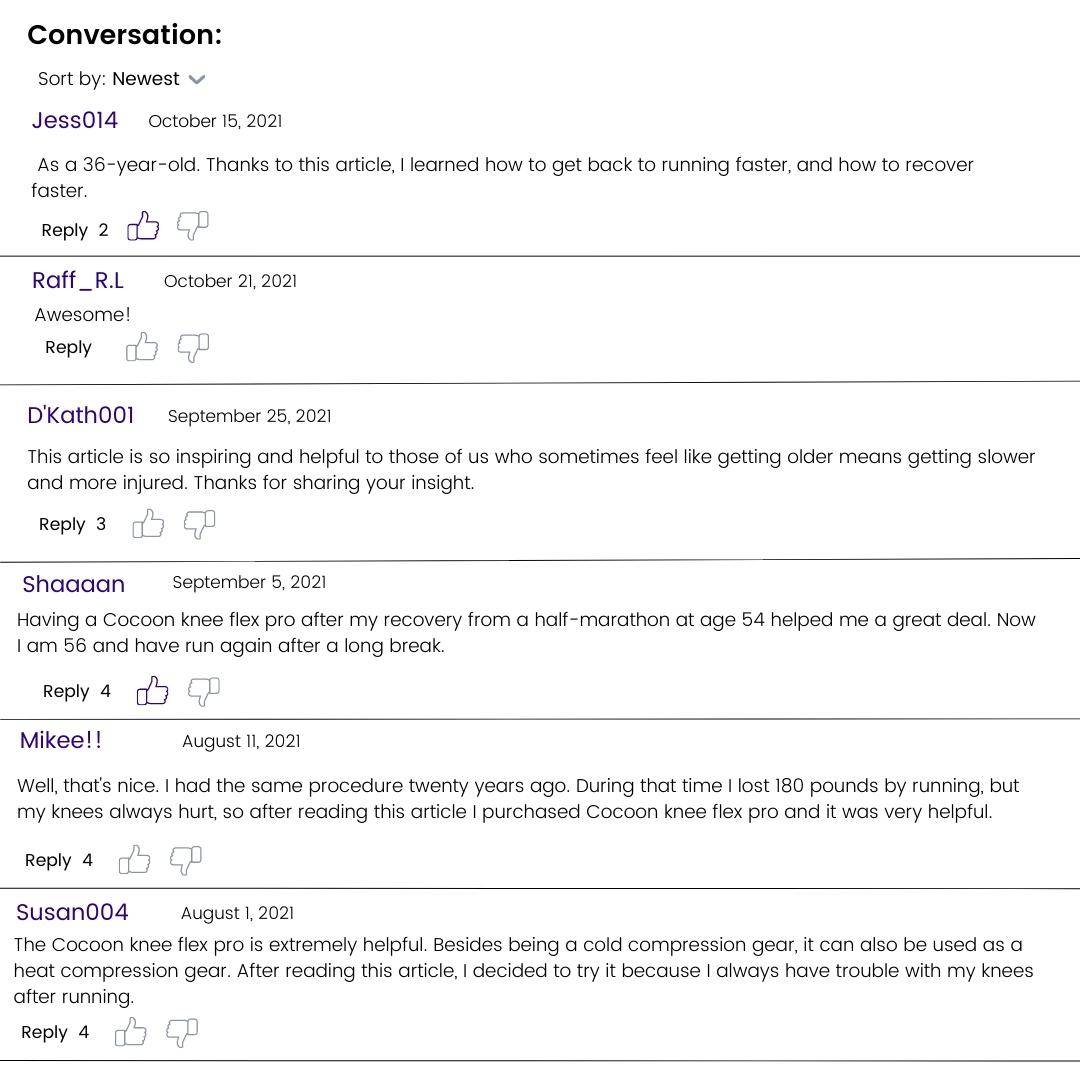
Please note that results may vary from customer to customer. The testimonials from clients do not guarantee specific results.
